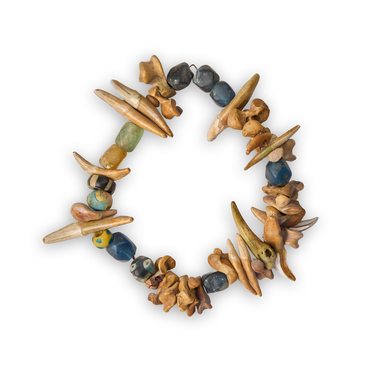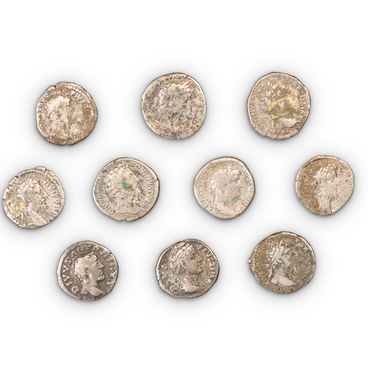The bronze mirrors found during excavations in the Belgorod region date back to the period from the 8th to the 10th century, when the tribes of the Saltovo-Mayaki archaeological culture lived in this area. Intensive exploratory and excavation work on the sites of the early Middle Ages was carried out under the leadership of Svetlana Alexandrovna Pletneva, an employee of the Institute of Archaeology of the USSR Academy of Sciences, in the late 1950s — early 1970s.
The presented mirror is made of bronze. One side of it, the front, was polished to a shine. The other, the back, was adorned with a floral decoration, and a special loop for attachment was placed in the center.
Mirrors are a typical find in Saltovo catacombs. They are quite large in size (their diameter ranges from six to seven centimeters) and are cast from white bronze. There is often a cone with a hole (loop) on the back of the mirrors, which was used for fastening.
In the Khazar culture, an ordinary household item with a certain image or pattern acquired the sacred meaning of a talisman. Therefore, bronze mirrors were not only items that were used in everyday life, but could also serve as an amulet. The mirrors are decorated with certain patterns: zigzags and concentric circles are most common. Sometimes there are images of a nine-pointed rosette, plant, or mesh pattern.
The creation of bronze mirrors was a complex, time-consuming process that required high purity of metal. According to researchers, mirrors were a kind of luxury item. Archaeologists find them in the catacombs of rich women. In addition to mirrors, the grave goods often feature beads, bracelets, earrings, and rings. The selection of items often corresponded to the deceased’s social status. These things were supposed to help the deceased woman occupy the same position in the afterlife that she held in this life. Thus, the burial ceremony with mirrors and other items reveals the religious beliefs of the Alans and Bulgars — the belief in an afterlife as a continuation of the earthly one.
Metal mirrors in burials are often found next to
the pelvic bones. This suggests that they were worn suspended from a belt,
possibly in a special case or pouch. In other cases, mirrors were placed in the
grave next to the body of the buried woman or at her feet, likely as a funerary
offering.



